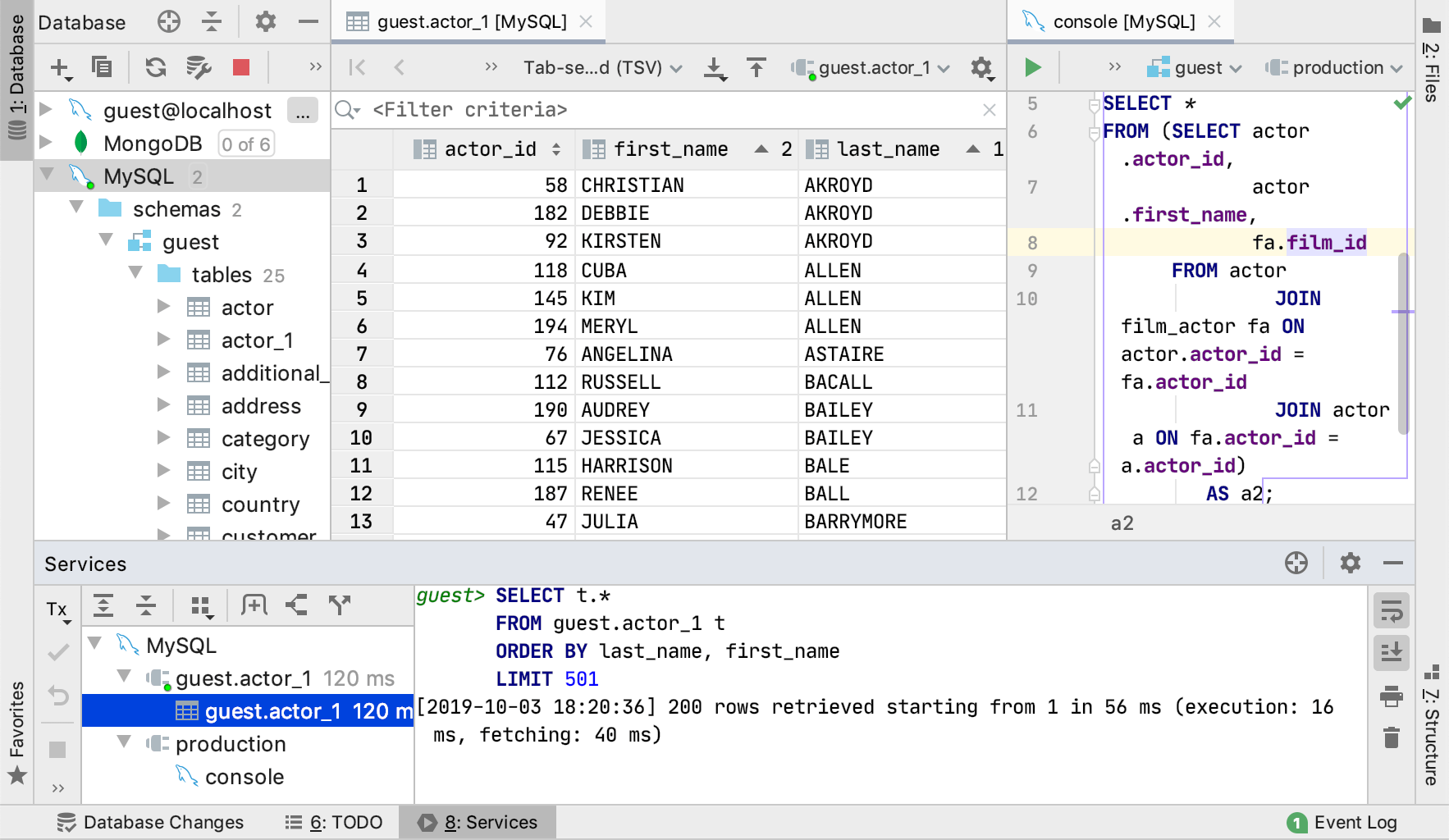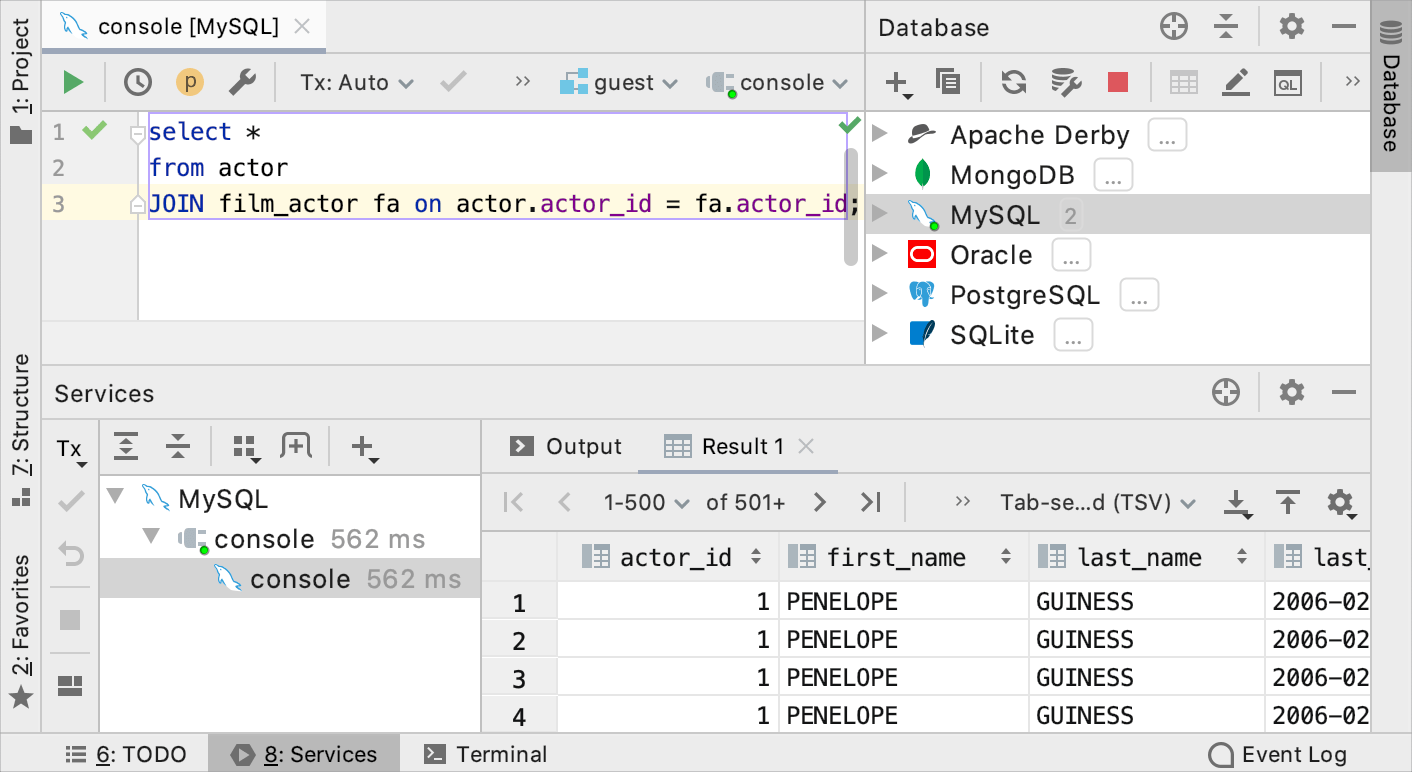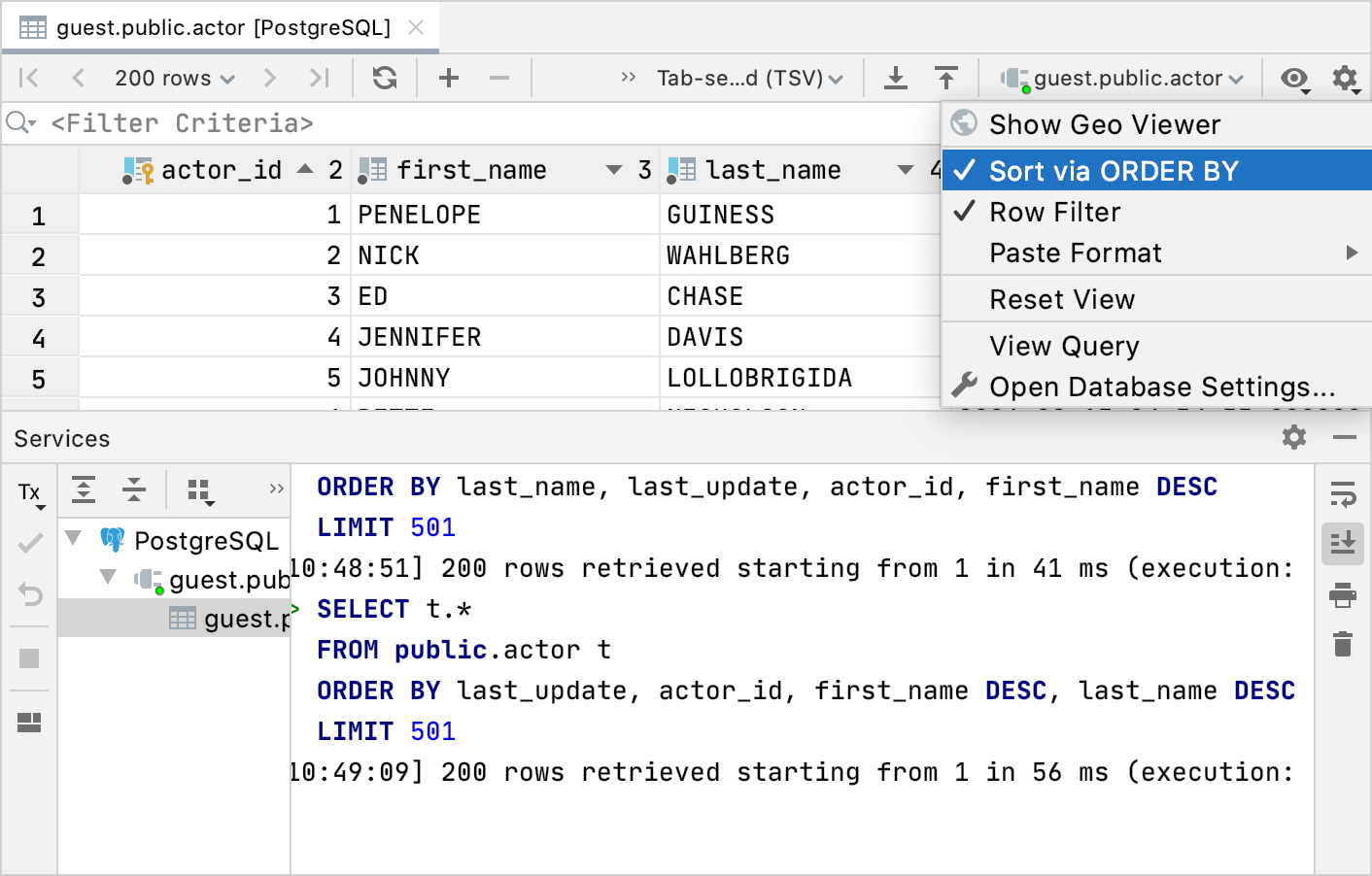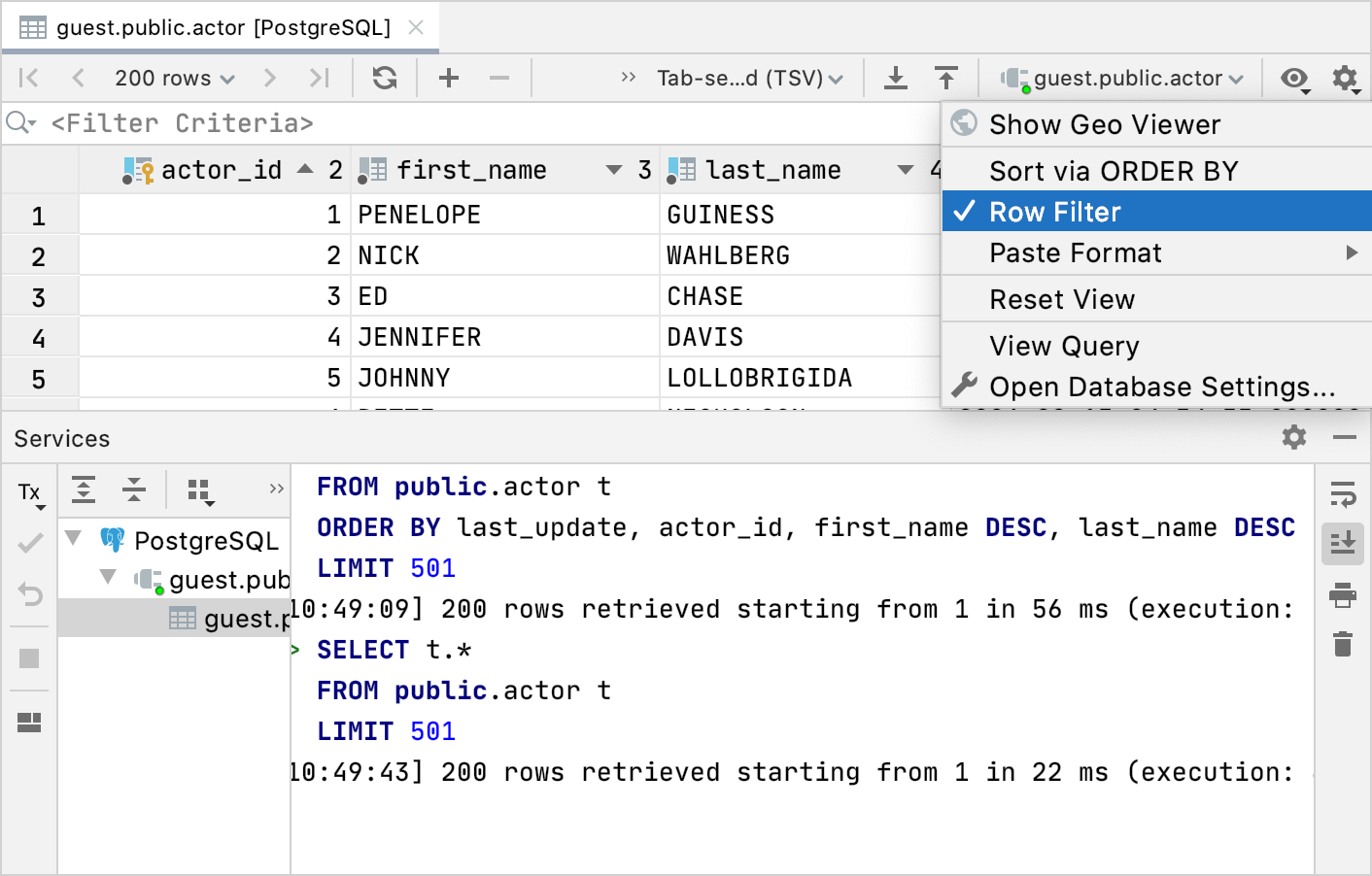Data editor
From the Database tool window (for any table within a DB data source):
on the toolbar (if the toolbar is not currently hidden)
Open Editor from the context menu
F4
Overview
The data editor provides a user interface for working with table data. In the data editor, you can sort, filter, add, edit and remove the data as well as perform other, associated tasks.
For more information about operations with tables, columns, rows, and cells, see the following articles:


Toolbar controls, context menu commands for data cells and keyboard shortcuts
Most of the available functions are accessed by means of controls on the toolbar, context menu commands for the data cells, and associated keyboard shortcuts.
| Item | Shortcut | Description |
|---|---|---|
| Ctrl+F5 | Reload data for the table view to synchronize the data that you see in the editor with the contents of the database. Also, use the Reload Page button when you want to apply a new page size limit setting after its change. | |
| Alt+Insert | Add a row to the table. To save a new row, click Submit For more information about working with rows, see Tables. | |
| Ctrl+Y | Delete the selected row or rows. To select rows, click numbers in the gutter. To select multiple rows, press Ctrl and click the necessary rows. | |
Select the isolation level for database transactions and the way the transactions are committed.
| ||
| Ctrl+Enter | Submit local changes to the database server. See Submit changes to a database. | |
| Commit the current transaction. See also, Tx and Tx Isolation. | ||
| Roll back changes. | ||
| Ctrl+F2 | Terminate execution of the current query. | |
| Compare the current table with the table in the Services tool window. For more information about comparing tables, see Compare table data. | ||
Select an output format for your data. Also, you can configure the following options:
| ||
| Copy the table data to the clipboard or save to a file. | ||
| Use this command to save the table data in a file. In the dialog that opens, specify the location and name of the file. | ||
| Export the data to another table, schema or database. Select the target schema (a new table will be created) or table (the data will be added to the selected table). In the dialog that opens, specify the data mapping info and the settings for the target table. | ||
| View Query | Use this button to view the query which was used to generate the current table view. To close the pane where the query is shown, press Escape. | |
| Edit | F2 | Edit a value in the selected cell or cells. Alternatively, you can double-click the cell and start typing a value. The Edit command is unavailable for read-only values. For read-only values, use the View command.
For more information about editing cells, see Cells. |
| Edit Maximized | F2 | Expand the selected cell to edit a value in the cell. In a maximized cell, press Enter to start a new line. To enter the value, press Ctrl+Enter. To restore an initial value and quit the editing mode, press Escape. For more information about editing cells, see Cells. |
| Set DEFAULT | Ctrl+Alt+D | Set the default value or values that you specified for the column. To view the default column value, right-click a table in the Database tool window () and select Modify Table. Double-click the column entry and see the value in the Default field. |
| Set NULL | Ctrl+Alt+N | Replace the value or values with NULL. To ensure that the column accepts NULL values, right-click a table in the Database tool window () and select Modify Table. Double-click the column entry and see if the Not null checkbox is cleared. |
| Load File | Load a file into the field. | |
| Revert | Ctrl+Z | Revert changes within the selection. For more information about reverting changes, see Submit changes to a database. |
| Clone Row | Ctrl+D | Create a copy of the selected row. |
| Quick Documentation | Ctrl+Q | Open the quick documentation view. To close the view, press Escape. For more information about quick documentation, see Using the quick documentation view. |
| View as | Transpose | Toggle the transposed table view. In the transposed view, the rows and columns are interchanged. To make this mode a default for tables and views, open settings by pressing Ctrl+Alt+S and navigate to and select the Transpose tables and views. When this option is enabled, query results are not transposed. | |
| Go To | Row | Ctrl+G | Jump to a specified row. In the Go to Row dialog, specify the column and row number (use the column:row pattern). |
| Go To | Related Data | F4 | |
| Go To | Referenced Data | Ctrl+B | |
| Go To | Referencing Data | Alt+F7 | |
| Filter by | Use this command to access quick filtering options. The options include those for the current column name and depend on the value in the current cell. | |
| Copy | Ctrl+C | Copy the selection to the clipboard. |
| Paste | Ctrl+V | Paste the contents of the clipboard into the table. |
| Save LOB | Save a binary large object (LOB) currently selected in the table in a file. | |
| Alt+J, Alt+Shift+J, Ctrl+W | See Tables. |

